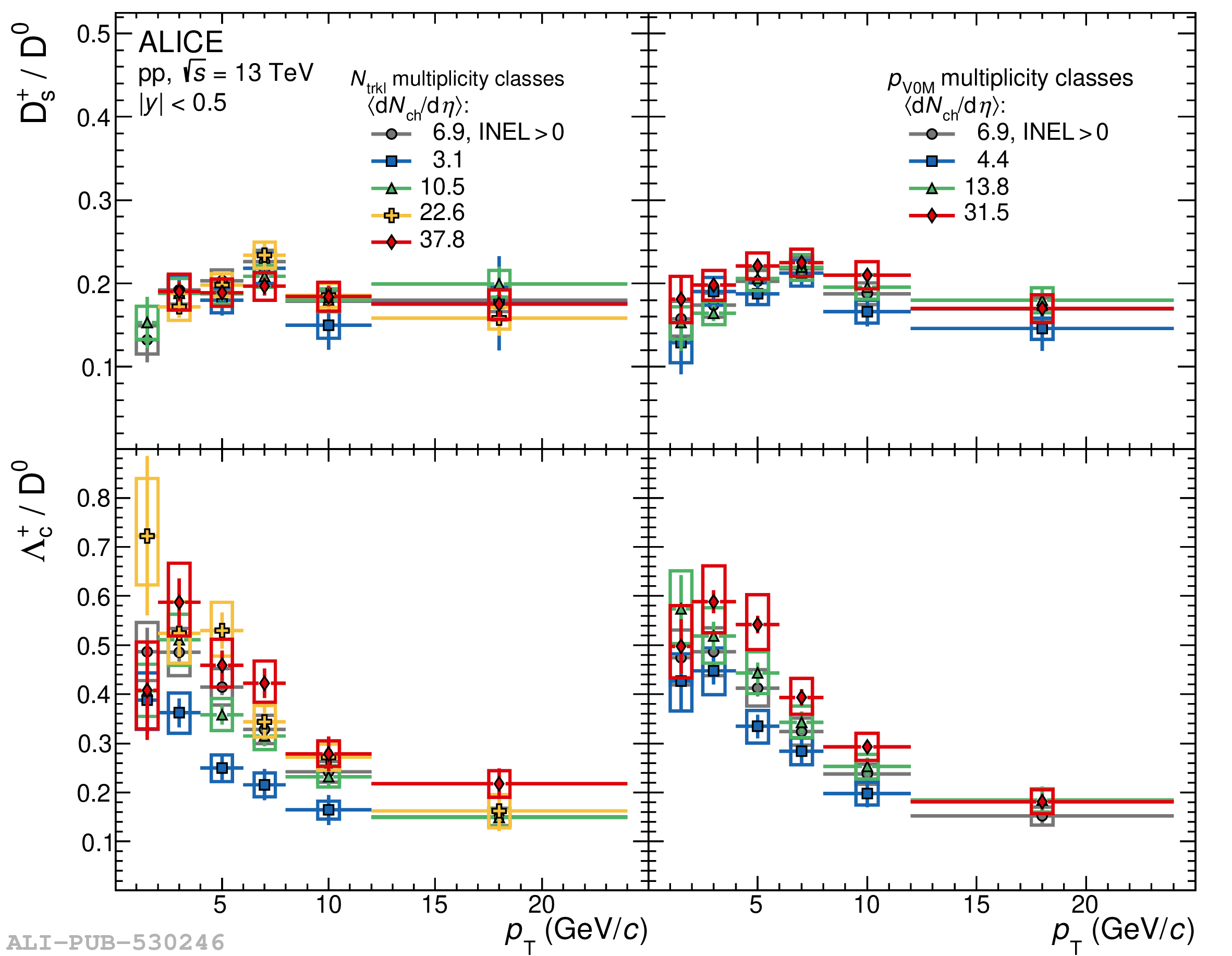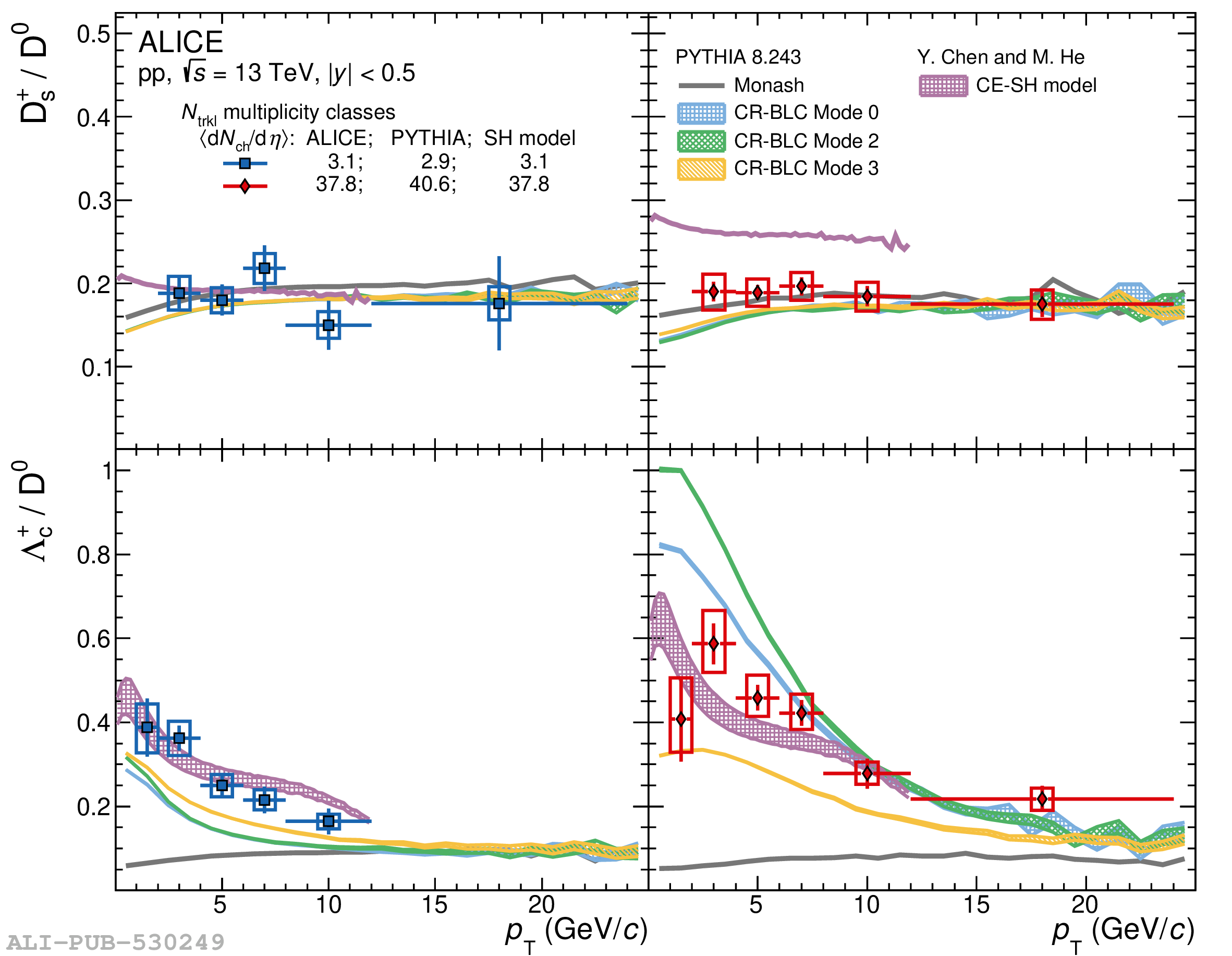The production of prompt $D^{0}$, $D^{+}_{\rm s}$, and $\Lambda_{\rm c}^{+}$ hadrons, and their ratios, $D^{+}_{\rm s}$/$D^{0}$ and $\Lambda_{\rm c}^{+}$/$D^{0}$, are measured in proton-proton collisions at $\sqrt{s}$ = 13 TeV at midrapidity ($|y| <~0.5$) with the ALICE detector at the LHC. The measurements are performed as a function of the charm-hadron transverse momentum ($p_{\rm T}$) in intervals of charged-particle multiplicity, measured with two multiplicity estimators covering different pseudorapidity regions. While the strange to non-strange $D^{+}_{\rm s}$/$D^{0}$ ratio indicates no significant multiplicity dependence, the baryon-to-meson $p_{\rm T}$-differential $\Lambda_{\rm c}^{+}$/$D^{0}$ ratio shows a multiplicity-dependent enhancement, with a significance of 5.3$\sigma$ for $1<~ p_{\rm T} <~ 12$ GeV/$c$, comparing the highest multiplicity interval with respect to the lowest one. The measurements are compared with a theoretical model that explains the multiplicity dependence by a canonical treatment of quantum charges in the statistical hadronisation approach, and with predictions from event generators that implement colour reconnection mechanisms beyond the leading colour approximation to model the hadronisation process. The $\Lambda_{\rm c}^{+}$/$D^{0}$ ratios as a function of $p_{\rm T}$ present a similar shape and magnitude as the $\Lambda/K^{0}_{s}$ ratios in comparable multiplicity intervals, suggesting a potential common mechanism for light- and charm-hadron formation, with analogous multiplicity dependence. The $p_{\rm T}$-integrated ratios, extrapolated down to $p_{\rm T}$=0, do not show a significant dependence on multiplicity within the uncertainties.
Phys. Lett. B 829 (2022) 137065
HEP Data
e-Print: arXiv:2111.11948 | PDF | inSPIRE
CERN-EP-2021-245
Figure group





